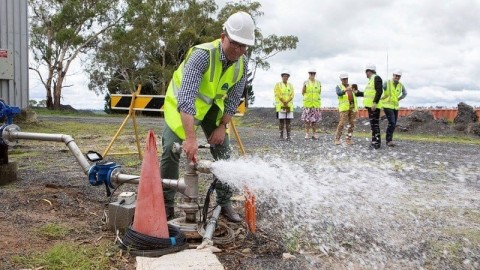Murrumbidgee Irrigation (MI) will remove its Rice Growing Rules because they are no longer effective in managing groundwater levels.
MI CEO Brett Jones said the Rice Growing Rules were originally developed to protect the long-term sustainability of the Murrumbidgee Irrigation Area (MIA).
“At the time the Rules were considered an effective measure to reduce recharge of groundwater, or otherwise limit the height of the groundwater within the MIA,” Mr Jones said.
Over the past two years MI has worked in partnership with rice growers and the Rice Growers Association to trial interim arrangements to relax the Rice Growing Rules.
MI’s investigations into the drivers for changes to groundwater levels in the MIA have shown that infrastructure modernisation, and on-farm water efficiency programs, have improved water use efficiency and reduced losses to groundwater over time.
“It became clear, through our investigations, that the current Rules are no longer an effective control measure for managing regional groundwater levels,” Mr Jones said.
“In addition, there is a growing amount of scientific evidence showing the significant influence of climate events, such as rainfall and flooding, on water tables.”
MI’s Rice Growing Rules will be removed from 1 July 2016, and there will be no Rice Monitoring Fee levied on customers who grow rice from 2016-17.
“By removing the previous restrictions it will open up greater opportunities for customers across the region,” Mr Jones said.
MI will continue to meet its monitoring and water use reporting obligations and, over coming months, will partner with key stakeholders, including the Local Land Services and commodity groups, to identify more effective ways to protect the sustainability of land use in the MIA.



















